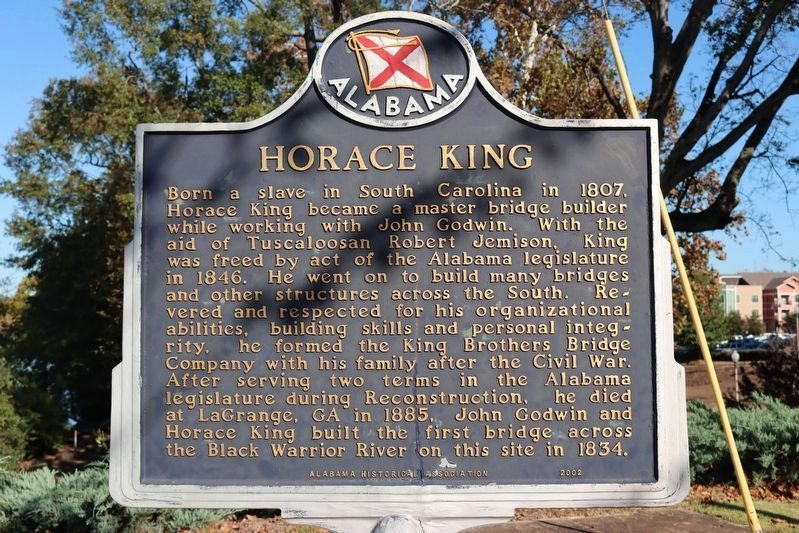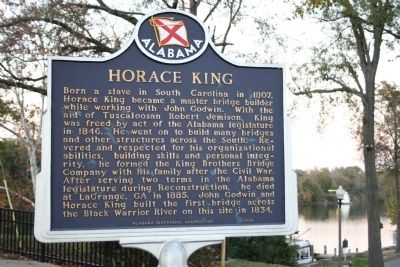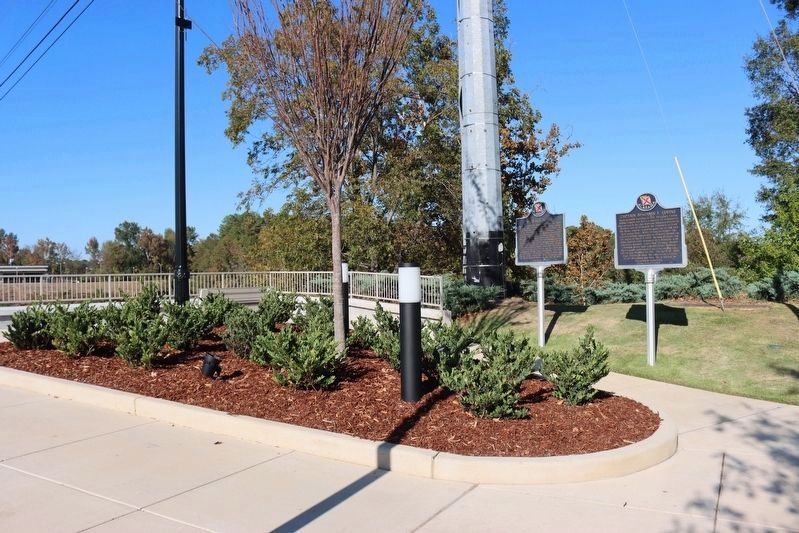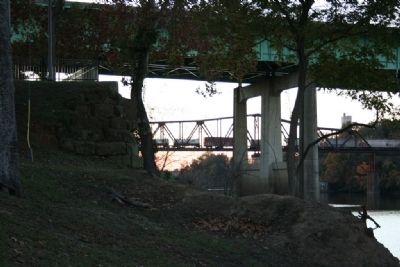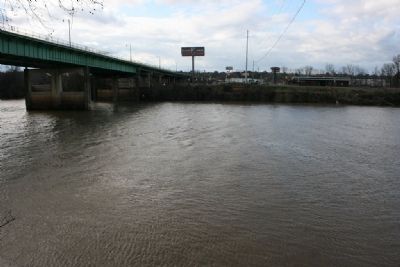Tuscaloosa in Tuscaloosa County, Alabama — The American South (East South Central)
Horace King
Erected 2002 by Alabama Historical Association.
Topics and series. This historical marker is listed in these topic lists: African Americans • Bridges & Viaducts • Government & Politics • Industry & Commerce. In addition, it is included in the Alabama Historical Association series list. A significant historical year for this entry is 1807.
Location. 33° 12.83′ N, 87° 34.349′ W. Marker is in Tuscaloosa, Alabama, in Tuscaloosa County. Marker can be reached from Greensboro Avenue near 2nd Street (Jack Warner Parkway). Marker is located in the Black Warrior Riverwalk Park just east or upriver of the Lurleen B. Wallace Blvd Bridge. Touch for map. Marker is in this post office area: Tuscaloosa AL 35401, United States of America. Touch for directions.
Other nearby markers. At least 8 other markers are within walking distance of this marker. Captain Benjamin F. Eddins (here, next to this marker); Medeiros Point (within shouting distance of this marker); Burns’ Shoals (about 300 feet away, measured in a direct line); Navigation and Shipbuilding On The Black Warrior River (about 500 feet away); The Black Warrior River (about 600 feet away); Home Guard Defended Covered Bridge / Bridging The Black Warrior River (about 600 feet away); The M & O Railroad Trestle (approx. ¼ mile away); “The Indian Fires Are Going Out” (approx. 0.3 miles away). Touch for a list and map of all markers in Tuscaloosa.
Also see . . . Horace King. Encyclopedia of Alabama entry (Submitted on March 21, 2010, by Timothy Carr of Birmingham, Alabama.)
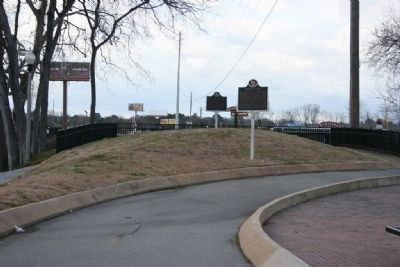
Photographed By Tim Carr, March 13, 2010
4. Horace King Marker (foreground) and Captain Benjamin F. Eddins Marker (background)
Old Location - The two markers are stand on the approach where Horace King built the first river bridge at this site in 1834. The first bridge was damaged by a tornado in 1842, and rebuilt in 1852, and then destroyed by Union Troops in 1865. Horace King built a new wooden bridge in 1872, that bridge was replaced with a 3-span iron bridge in 1882. To accommodate river traffic a higher bridge with a swing span was built 1895. That bridge was replaced with a drawbridge in 1922 and was used up to 1974 after the Hugh Thomas Bridge was opened slightly downstream. All the bridges built on this site utilized the original 1834 piers.
Credits. This page was last revised on November 8, 2023. It was originally submitted on March 21, 2010, by Timothy Carr of Birmingham, Alabama. This page has been viewed 2,635 times since then and 55 times this year. Last updated on November 6, 2023, by Kai NeSmith of Tuscaloosa, Alabama. Photos: 1. submitted on November 6, 2023, by Kai NeSmith of Tuscaloosa, Alabama. 2. submitted on March 21, 2010, by Timothy Carr of Birmingham, Alabama. 3. submitted on November 6, 2023, by Kai NeSmith of Tuscaloosa, Alabama. 4, 5, 6. submitted on March 21, 2010, by Timothy Carr of Birmingham, Alabama. • James Hulse was the editor who published this page.
